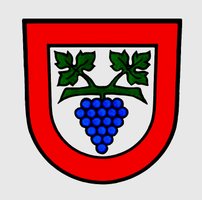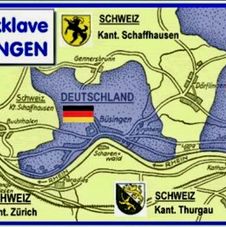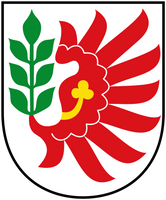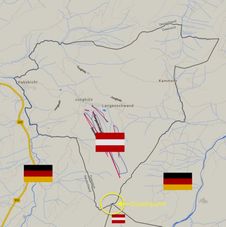Enclaves/Exclaves
Here I like to share information about enclaves/exclaves in general and specific the ones I visited:
The world knows 62 territorys entirely surrounded by the territory of only one other state or entity.
30 of these worldwide territorys, you'll find at Baarle (Be/NL).
For a total >worldwide view< on enclaves just look here.
Baarle (Be/Nl)
(click for webpage)
A lot allready has been told, but I know a lot ain't. The enclaves of Baarle are hugh and ain't - so called - easy to contain in one word.
Baarle includes 22 Belgian enclaves, in those 22, there are 7 Dutch counter enclaves.
Actually there's 1 Dutch enclave in Belgian, inside mainland.
Just have a look on my page 'Baarle' for a view and (kind of) guided tour.
Büsingen
Büsingen is a German exclave, fully surrounded by Switzerland. We find it South-West of Germany in Baden-Württemberg.
Büsingen used to be under Habsburg autority. During the Napoleonic wars Büsingen in 1805 became part of the Kingdom of Württemberg.
Borders were set by the congres of Vienna in 1815.
Vehicle registration plate BüS
The vehicle registration plate Büs-A instead of KN-A
When a Büsingen resident drives into a German town, parks his car and returns after a while, it is not uncommon for him to come across one or more men crouched down, examining his car registration plate and discussing it. "Büs-A... never seen that it even exists." Yes, yes it does. Not often, but at least. There are probably around 700 cars that have this (exotic for non-Büsingen residents) registration plate.
And not without reason. Büsingen belongs to the district of Konstanz and should actually have a KN registration plate on its cars and motorcycles. But because Büsingen is a special case here too, our village was released from the KN requirement and given its own Büs registration plate. To the advantage and to make work easier for Swiss border officials. While a Swiss customs officer in Geneva or Basel assesses German cars as passing through and usually doesn't even stop them, he knows that a BÜS car belongs to the Swiss economic area and may be carrying goods that are subject to customs. He stops the BÜS car and then comes the obligatory question: "Did you drive something over or did you get something for free?"
By the way, there are also cars with Büs-Z license plates. But you can count them on one hand. These are cars that were imported into Büsingen without paying customs, but can only be driven in this status for two years.
Büsingen has its own vehicle registration plate according to the state treaty. Therefore, Büsingen vehicles bear the letters BüS, although the municipality belongs to the district of Konstanz and should therefore actually have the registration plate KN. The BüS registration plates were introduced at the beginning of 1968 to make the work of Swiss customs officials easier. Vehicles with BüS registration plates are treated like Swiss vehicles when entering Switzerland and in traffic there.
The regular BüS registration plates are with the identification letter A. There are also vehicles with the letter Z that were imported into Switzerland untaxed and are only allowed to drive with this status for a maximum of two years. BüS was the rarest registration plate that was newly issued in Germany until the registration plate liberalization. Since then, numerous old registration plates have been reintroduced, which meant that BÜS lost its status as the rarest registration plate, at least temporarily. However, it is still the smallest registration district in Germany.
Motor vehicle taxes are paid to the main customs office in Singen (Hohentwiel). However, the motor vehicle taxes of the canton of Schaffhausen are decisive, which are sometimes significantly lower than the German rates, especially for diesel vehicles, and do not depend on the emission standard. In the past, this has led to Germans taking up fictitious residency in order to save on motor vehicle taxes.
And guess what we found while in Büsingen
© grenspalen.one ©
© grenspalen.one ©
Jungholz (At)
Jungholz is an Austrian exclave, surrounded by Germany. It is situated in the Nortwest part of Austria in the district Tirol.
Untill 24 juni 1342, Jungholz was part of Beieren (De). Since this date it became part of Tirol (At).
Borders were decided in 1844 and 1850 in agreements between the Kingdom of Beieren and Empire Austria/Hungaria, also known as the Dual Monarchy or Donau Monarchy.
Sorgschrofen (1.636 mtr.)
The quadripoint is a special to be named.
At Mt. Sorgschrofen. On the top of this mountain 2 parts of Austria and 2 parts of Germany meet each other.
That point is a quadripoint, same as we found one in Baarle (Nl).



























































































































